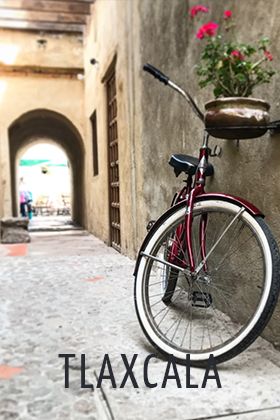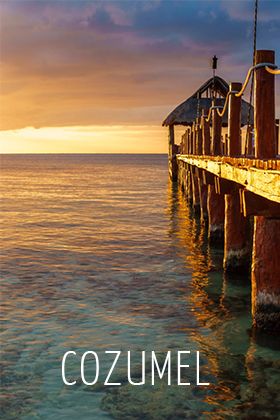Procession of Silence-A Ritual of Faith
by: Travel by México

Procession of Silence-A Ritual of Faith
by: Travel by México
Every Good Friday, the downtown streets of San Luis Potosi take on an air of mysticism. At eight o’clock in the evening, a parade of sorrowful mourners fills the streets, thus beginning the Procession of Silence. Each year, the faithful grieve the death of Jesus during this, the greatest religious event of the capital.
The re-enactment begins in the esplanade of the Plaza del Carmen, with Roman troops banging their drums and playing notes on the bugle. After, the Praetorian Guard moves to the front of the group and knocks three times on the door of El Carmen Church. At the same time, the bugle player orders all of the people present to be silent. The crowd obeys and a sense of anticipation fills the air. Then, as the doors open wide, a religious procession begins to pour out into the plaza, with each participant carrying crosses and raising paschal candles into the air.
Soon, the surrounding streets are filled with people wearing cone-shaped hoods and carrying lanterns; they calmly advance with mournful expressions. All of the participants carry emblems and religious images and dress according to the colors that denote their religious denomination. Some especially noteworthy groups are the “Charros” and “Adelitas” (Women of the Mexican Revolution), as well as the Chirimía and Teponaxtle confraternities, both comprised of indigenous natives. The figure of Our Lady Virgin of Solitude, is the focal point of the parade. The image is carried on an ornate platform, weighing more than a ton and carried on the shoulders of 40 men.
Along the way, the procession stops at strategic sites and leaders deliver “pregones” and "saetas”. These rhetorical speeches, which come from Sevillian tradition, offer mournful homages in the form of recitation and song. The "pregones" are reflective proclamations which emphasize the meaning of Holy Week, while the "saetas” are flamenco-style chants that reverberate in the streets as mourners lament the crucifixion of Jesus Christ.
After processing throught the streets of Villerías, Universidad, Galeana, Independencia, Venustiano Carranza, Aldama, Madero and Manuel Jose Othon, the parade returns to where it began: El Carmen Church. At the stroke of midnight, the last cloaked participant returns and the doors of the church finally close. It is time for the city to rest in preparation of the next day’s celebration. The day will be filled with a series of special liturgies carried out in all of the city’s churches, recognizing Holy Saturday and the resurrection of Jesus Christ.
The traditional Procession of Silence originated in Spain around the 13th century. During this era, the Franciscan priests began practicing their "Blood Processions" in which they inflicted physical punishment upon themselves and performed sacred acts representing the passion of Christ. In the 16th century, the ritual was brought to New Spain through the Order of the Carmelitas Descalzas (Unshod Carmelite Nuns), and in 1815, the traditional event was carried out for the first time in San Luis Potosi. However, it was not performed annually, as it is now, until 1954. This tradition has become the most important Catholic procession in Mexico.
It is a religious practice that reveals, like light hitting a prism, the different facets of faith, in San Luis Potosi. The Procession of Silence is a powerful spiritual union of the people with God, through which they renew their community ties and face the future with hope.
r09



















